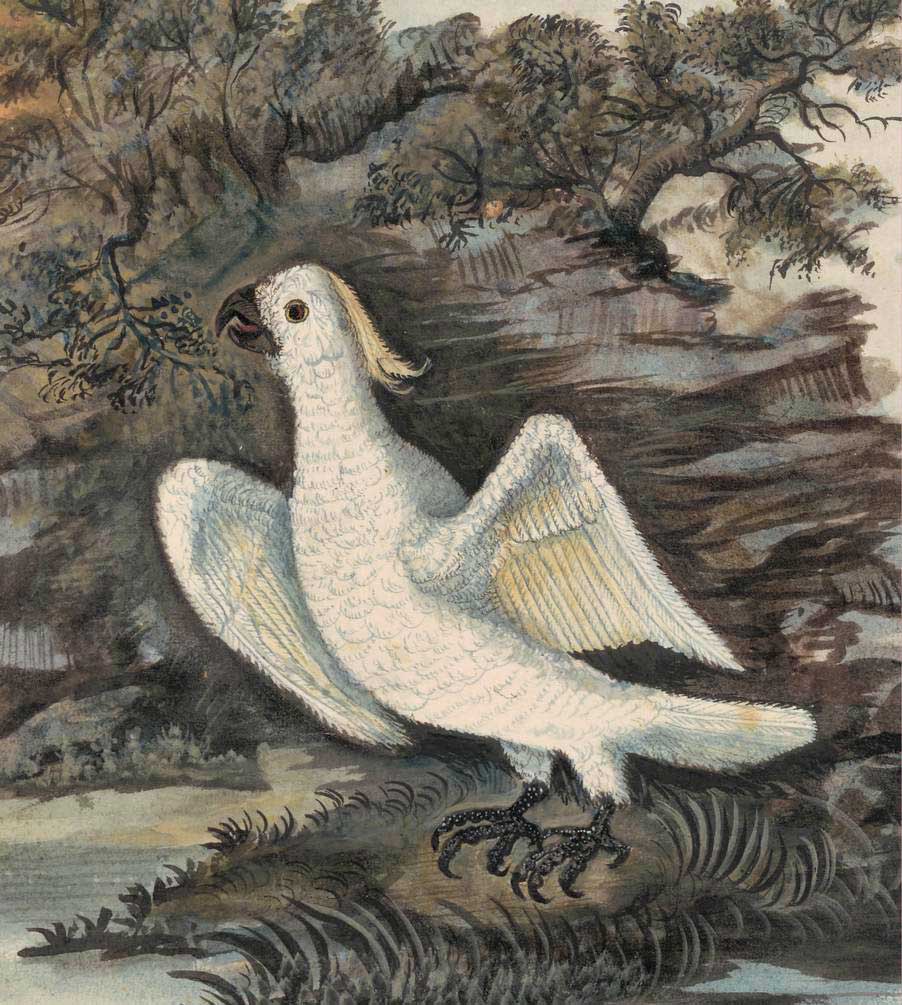Sulphur-crested Cockatoo
Cacatua galerita
John Latham was the first to describe the species, in 1790.
Cacatua is based on the Malay name for cockatoo, which refers to the large bill;
galerita is derived from the Latin galerus, which means crested or helmeted.

Édouard Traviès, Kakatoёs à Crête (Psittacus galeritus),
Nouvelle Hollande 1860s
Author’s note: The generic name ‘cockatoo’ is thought to have come from the Malay names Kakatuá and Kakak-tuá, in reference to the vice-like grip of the birds’ beaks. Crête is the French for crested.

Unknown artist, Sulphur-crested or White Cockatoo c. 1795
Author’s note: From the eighteenth century, or earlier, the Lesser Sulphur-crested Cockatoo, which inhabits several islands to Australia’s north-west, was taken back to Europe by traders. This yellow-crested bird is closely related to the Sulphur-crested Cockatoo (which occurs in Australia and Papua New Guinea) and, in early illustrations, the two species are sometimes indistinguishable.

Sarah Stone, Crested Cockatoo 1790
Author’s note: This watercolour is the first published illustration of the species.
The Sulphur-crested Cockatoo’s long, mobile sulphur-yellow crest is usually sleeked back but the expressive bird raises it when excited or alerted by something.




